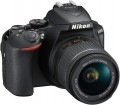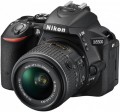Number of scene programs
The number of scene programs provided in the camera design.
Scene programs are preset settings for some of the most common shooting scenes - for example, Portrait, Landscape, Sports, Sunset, etc. In addition to these presets, this list may include special effects and creative tools (such as color swap or fisheye), as well as exposure modes (see below). The presence of scene programs is especially useful for beginners and non-professional photographers, as it eliminates the need to tinker with each setting separately - just select the most suitable program, and all the necessary settings will be set automatically. The more scene programs the camera design provides, the wider its automatic adjustment capabilities.
Frames per series (JPEG)
The highest number of shots a camera can capture “in one go” in JPEG continuous shooting.
The technical features of modern digital cameras are such that during continuous shooting, photos have to be recorded in a special buffer, and only then, after the end of the series, they can be copied to a memory card. This buffer has a limited size, so the number of frames in one series is also limited. At the same time, we note that this indicator is usually indicated for shooting at the highest possible resolution (see "Maximum image size"); at lower resolutions, the volume of each image is reduced, and the number of frames in the series may turn out to be more than stated in the specifications.
JPEG, the most popular digital photography format today, is smaller and requires less processing power than RAW (see "Recording in RAW Format"). Therefore, in a JPEG series, as a rule, more frames are available to the photographer. However, in some models that have two separate buffers (for RAW and JPEG), it may be the other way around.
Frames per series (RAW)
The highest number of shots the camera can capture “in one shot” when shooting in RAW format continuously (see “Recording in RAW Format”).
The technical features of modern digital cameras are such that during continuous shooting, photos have to be recorded in a special buffer, and only then, after the end of the series, they can be transferred to a memory card. This buffer has a limited size, so the number of frames in one series is also limited. At the same time, we note that this indicator is usually indicated for shooting at the highest possible resolution (see "Maximum image size"); at lower resolutions, the volume of each image is reduced, and the number of frames in the series may be more than stated in the specifications.
RAW images take up more space and require more processing power than "finished" JPEGs. Therefore, the number of frames in a series of this format is usually lower than that of JPEG. However, there are exceptions — usually these are cameras that have two separate buffers (for RAW and JPEG).
Communications
-
GPS module. The camera has a built-in GPS satellite navigation module. In digital cameras, the GPS module is used primarily for setting the so-called. geo-tagging to photos: information about specific geographical coordinates of the shooting location is recorded in the service information about each image. However, the matter is not limited to this, and models with this function can have many additional features - from classic navigation to special programs like a database of points of interest with hints based on the current location.
-
WiFi. A wireless standard originally developed for computer networking, but more recently allowing for direct connection between devices. The ways in which Wi-Fi is used in cameras can vary. Thus, the most popular option is to connect to a smartphone, tablet or other similar device for remote control (see below) and / or transfer footage to an external device. Some cameras have built-in software that allows you to directly connect to the Internet through wireless access points and upload photos and videos to popular network services. And in models running Android (see above), specific features depend only on the installed software and may include full access to social networks through client programs (see below) and even web surfing through a browser.
— Bluetooth. A wireless interface used to communicate with various electronic devices. In cameras, Blu
...etooth is most often used to connect to a computer or laptop and transfer footage; In addition, it allows you to use the direct printing function on printers equipped with Bluetooth. The range of Bluetooth communication is up to 10 m, and the devices do not necessarily have to be in direct line of sight to each other.
- NFC chip. NFC (Near-Field Communication) is a wireless communication technology designed to connect various portable devices with each other at a distance of up to several centimeters. In cameras it plays an auxiliary role, designed to facilitate connection with other devices (smartphones, tablets, etc.) using a longer-range standard (Wi-Fi or Bluetooth). Instead of delving into the settings - looking for devices, connecting them manually - just bring the NFC camera to a gadget equipped with the same chip and confirm the connection request.
— Control from a smartphone. The ability to remotely control the camera using a smartphone, tablet or other similar gadget. The connection between the camera and the control device is usually carried out via Wi-Fi (see above), while a special application is used for control, and the gadget’s screen plays the role of a viewfinder. The specific capabilities of such control can be different - releasing the shutter on command, selecting exposure parameters and other shooting settings, focusing by touch, etc. Often, it is also possible to “drain” the footage onto the control device and, through it, to the Internet. Note that for cameras used with mobile phones (see “Camera Type”), this function is not indicated: such a camera is usually mounted directly on the device, and there is no talk of remote control.Shots per charge
The maximum number of photos that the camera can take on a single battery without recharging/replacing it. In fact, this number usually turns out to be less (sometimes quite noticeable) due to the fact that part of the charge is “eaten up” by the lens mechanics, using the display, changing settings through the menu, etc. Nevertheless, this parameter is a good indicator of the battery life of the device, and different models can be compared with each other.

